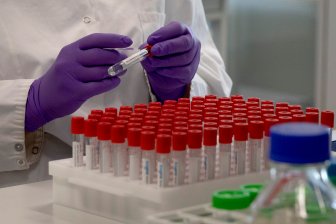COVID Alert app wraps first month with 2.2M downloads, 90 infection reports
It’s been one month since the country’s coronavirus exposure notification app launched and since then, COVID Alert has been downloaded roughly 2.2 million times.
Over the last four weeks, roughly 80 to 100 people have been testing positive each day in Ontario for COVID-19. But just 90 have logged their diagnosis with the app since it launched, and it’s not possible to tell how many people have been notified of exposure because the app does not collect that information.
“Due to the strong privacy and security measures built into the app, this data is not available,” said Natalie Mohamed, a spokesperson for the Public Health Agency of Canada.
However, Ontario — the only province where the app is currently available — has reported more than 100 confirmed cases of the coronavirus in 10 of the last 11 days.
Story continues below advertisement
One infectious disease expert cautions the numbers show a disconnect between the number of people being diagnosed and the number using the app to share that information to protect those around them.
Read more: Ontario reports 114 new coronavirus cases with nearly 25,100 tests conducted
“That’s a large amount that’s lost,” Dr. Zain Chagla, an infectious disease specialist at McMaster University, said when asked about the daily case numbers in Ontario versus those logged in the app.
“Uptake needs to be there, for sure. We know from global experience that the failure of these apps is really uptake more than anything else.
“There’s definitely some more work to be done getting into more people’s phones.”
The app works not in the sense of traditional contact tracing but by notifying people based on proximity to an individual who has informed the app of a positive coronavirus test result.
Those who test positive get a one-time code to log with the app, which uses Bluetooth rather than location data to ping any devices close enough that they are deemed to be at risk of exposure.
That radius is within two to three metres.
But because the app is voluntary, there’s no requirement for anyone who does test positive to log that information with the app so as to alert others of potential exposures.
Story continues below advertisement
“All aspects of the COVID Alert app are completely voluntary – Ontarians can choose whether to download the app, whether to use the app after downloading it, and whether to notify others if they test positive for COVID-19,” said Sebastian Skamski, press secretary for the Ontario treasury board president.
“However, using the app and alerting fellow Ontarians is highly encouraged.”
Skamski said the government continues to run marketing across social media and traditional media platforms and is working to get stakeholders to encourage use of the app.
Trending Stories
-
![]()
Porn star Ron Jeremy charged with 20 new counts of sexual assault
-
![]()
Canada secures 2 new deals for possible COVID-19 vaccines
 COVID-19 cases are on the rise among young adults
COVID-19 cases are on the rise among young adults Dr. Theresa Tam, Canada’s chief public health officer, was asked on Tuesday about uptake of the app so far and what else can be done to encourage more people to use it.
She said targeting certain segments of the population at specific sites where they may be at greater risk of exposure could help.
Story continues below advertisement
“I think some ongoing support to disseminate information and ask the public to download would be important,” Tam said, noting that “you don’t have to have necessarily a uniform uptake in a population.”
Instead, she pointed to the young adult population as one segment that might be worth targeting specifically, given they may be more inclined to frequent bars, pubs and restaurants, “or other places where you don’t know everybody around you.”
Chagla offered a similar suggestion.
“All of us are going back into society, all of us are going to stores, going to restaurants. Maybe it’s better for those private industries to say, ‘For the safety of our stores and the safety of the individuals in our establishment, please download the app when you enter this facility,'” he said.
“Encourage people to download the app as part of the experience of coming in.”
 COVID Alert app rollout
COVID Alert app rollout The app has been praised by privacy experts who say it strikes the right balance between the need to notify people of potential exposure and avoiding having the government collect increasing swaths of user and location data on citizens.
Story continues below advertisement
Neither the federal nor provincial government can track location or identities as a result of the app.
“Canadians can opt to use this technology knowing it includes very significant privacy protections,” privacy commissioner Daniel Therrien said in a statement when the app was released. “I will use it.”
While the federal government has said it will roll out to other provinces, there’s no timeline yet on when Canadians in other provinces will be able to use it.
Read more: Alberta will switch over to national coronavirus tracing app
The Alberta government said in August that it is in the process of transitioning over to use the new app and will abandon its own provincial app, which was created at a cost of roughly $650,000 but has run into functional challenges.
Manitoba hasn’t yet rolled out an app but says it is looking to expand its contact-tracing work.
Quebec and B.C. have so far said they are not currently planning on using the federal app.
The other provinces have not yet moved either way.
 Are there privacy risks to a COVID-19 contact-tracing app?
Are there privacy risks to a COVID-19 contact-tracing app? © 2020 Global News, a division of Corus Entertainment Inc.
tinyurlis.gdu.nuclck.ruulvis.netshrtco.de


